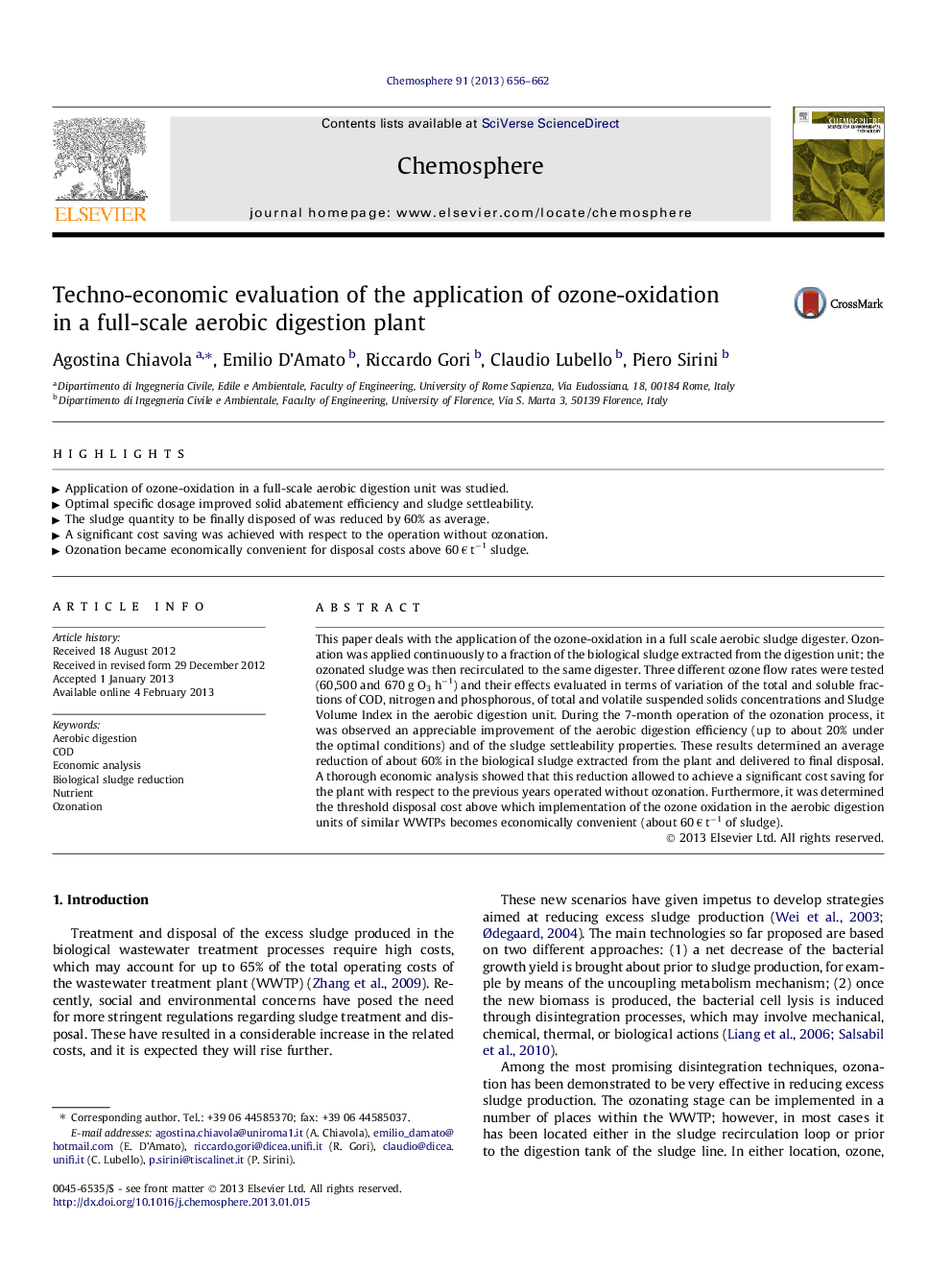| کد مقاله | کد نشریه | سال انتشار | مقاله انگلیسی | نسخه تمام متن |
|---|---|---|---|---|
| 4409382 | 1307480 | 2013 | 7 صفحه PDF | دانلود رایگان |

This paper deals with the application of the ozone-oxidation in a full scale aerobic sludge digester. Ozonation was applied continuously to a fraction of the biological sludge extracted from the digestion unit; the ozonated sludge was then recirculated to the same digester. Three different ozone flow rates were tested (60,500 and 670 g O3 h−1) and their effects evaluated in terms of variation of the total and soluble fractions of COD, nitrogen and phosphorous, of total and volatile suspended solids concentrations and Sludge Volume Index in the aerobic digestion unit. During the 7-month operation of the ozonation process, it was observed an appreciable improvement of the aerobic digestion efficiency (up to about 20% under the optimal conditions) and of the sludge settleability properties. These results determined an average reduction of about 60% in the biological sludge extracted from the plant and delivered to final disposal. A thorough economic analysis showed that this reduction allowed to achieve a significant cost saving for the plant with respect to the previous years operated without ozonation. Furthermore, it was determined the threshold disposal cost above which implementation of the ozone oxidation in the aerobic digestion units of similar WWTPs becomes economically convenient (about 60 € t−1 of sludge).
► Application of ozone-oxidation in a full-scale aerobic digestion unit was studied.
► Optimal specific dosage improved solid abatement efficiency and sludge settleability.
► The sludge quantity to be finally disposed of was reduced by 60% as average.
► A significant cost saving was achieved with respect to the operation without ozonation.
► Ozonation became economically convenient for disposal costs above 60 € t−1 sludge.
Journal: Chemosphere - Volume 91, Issue 5, April 2013, Pages 656–662